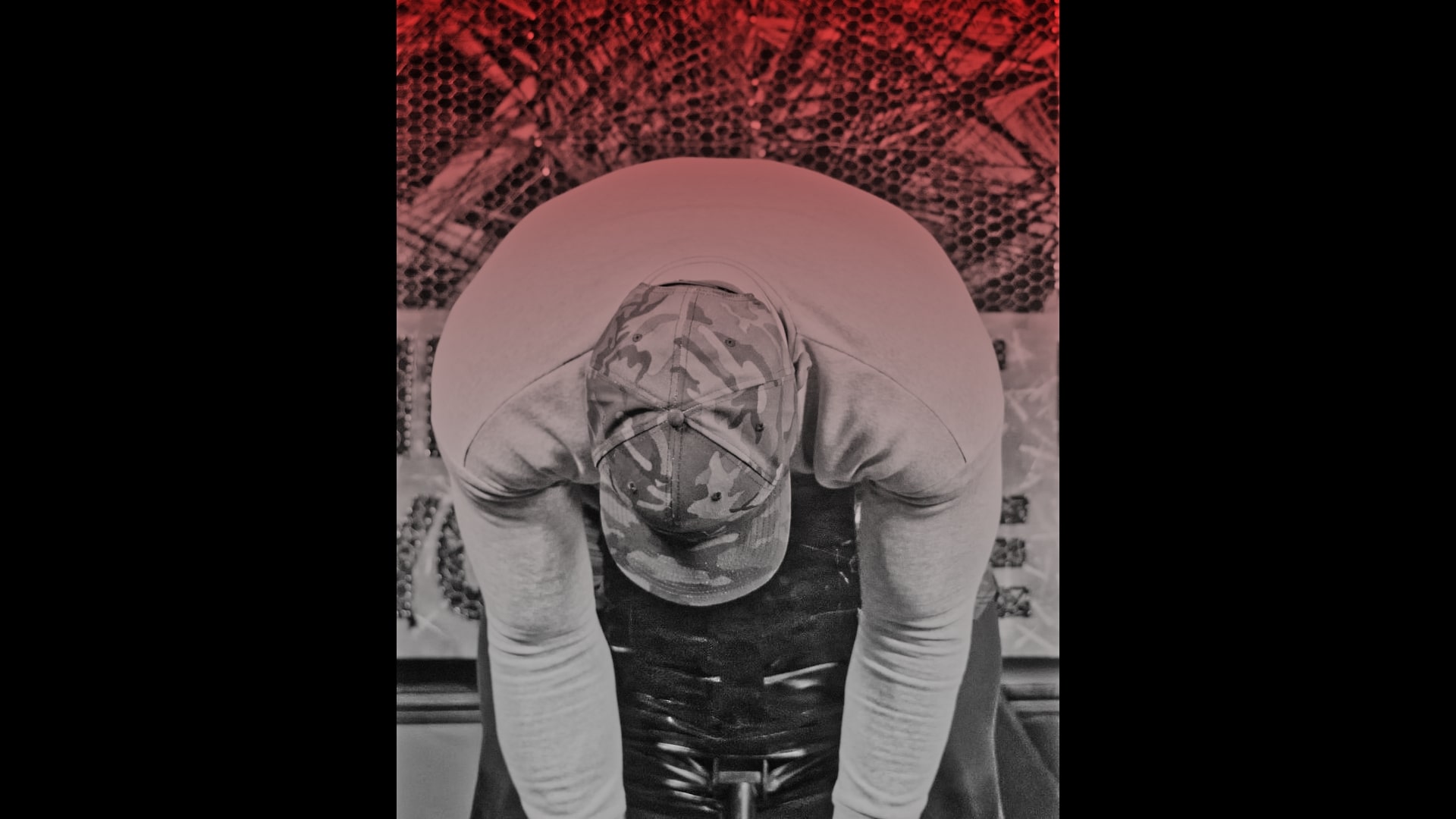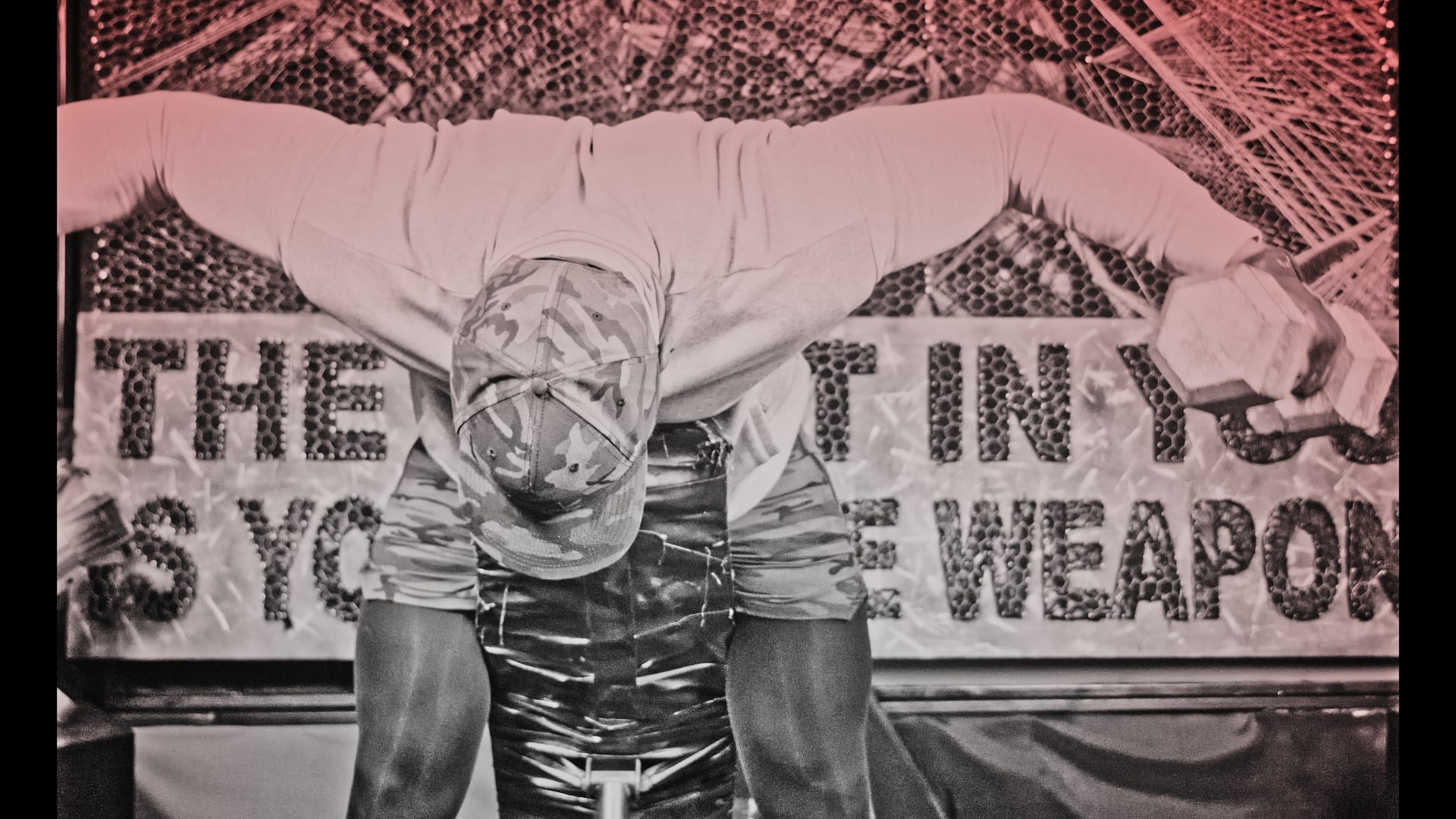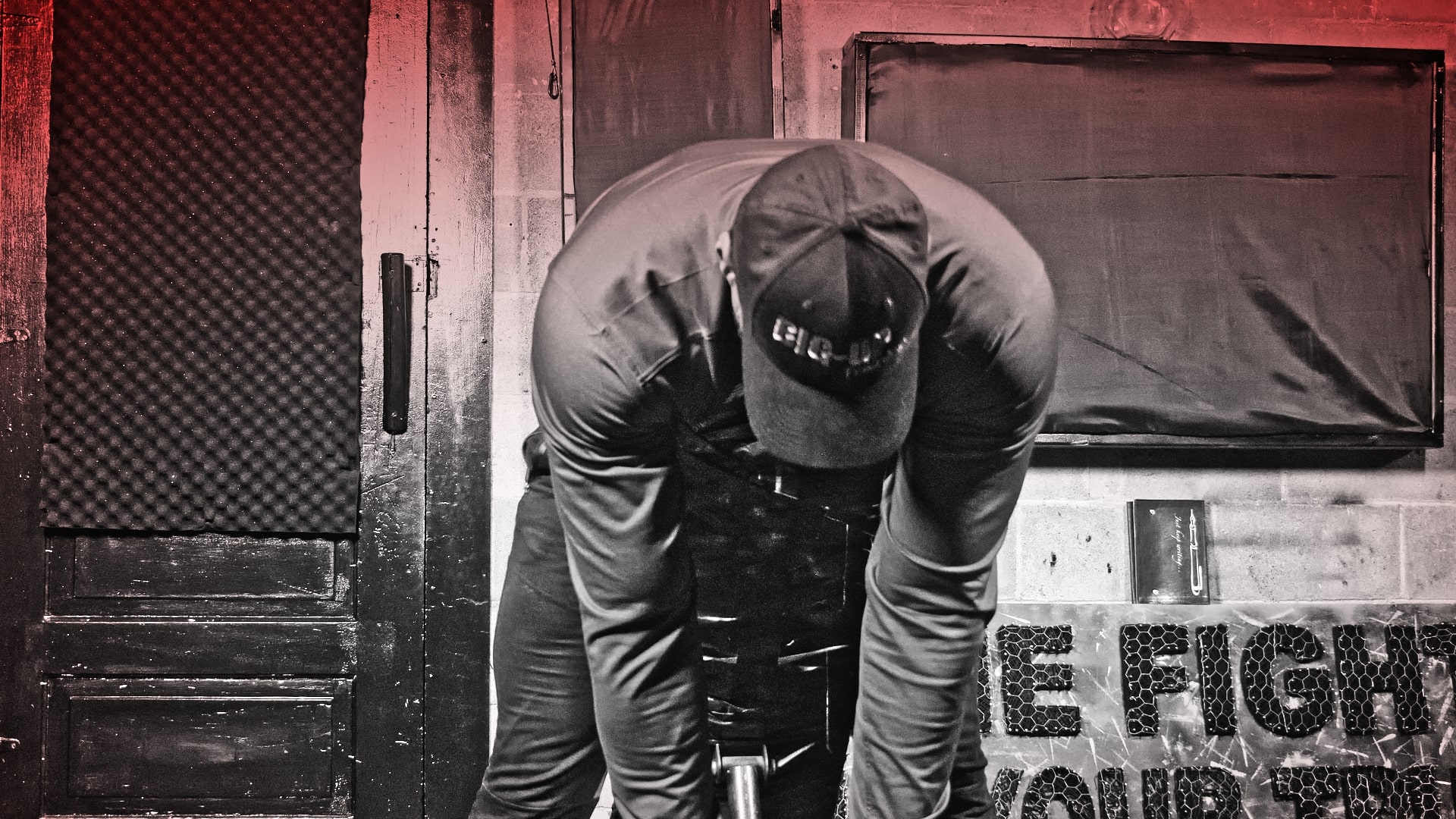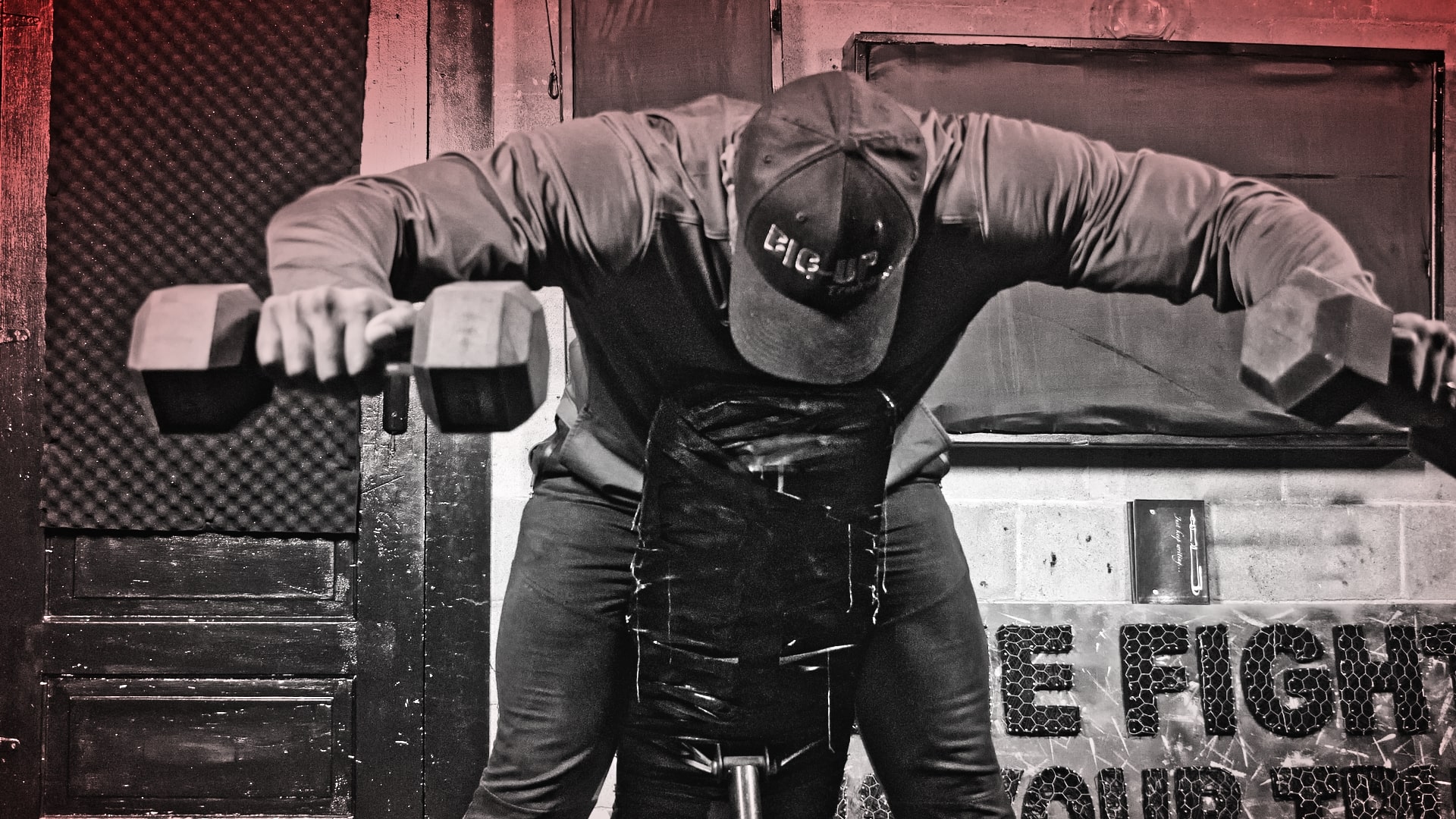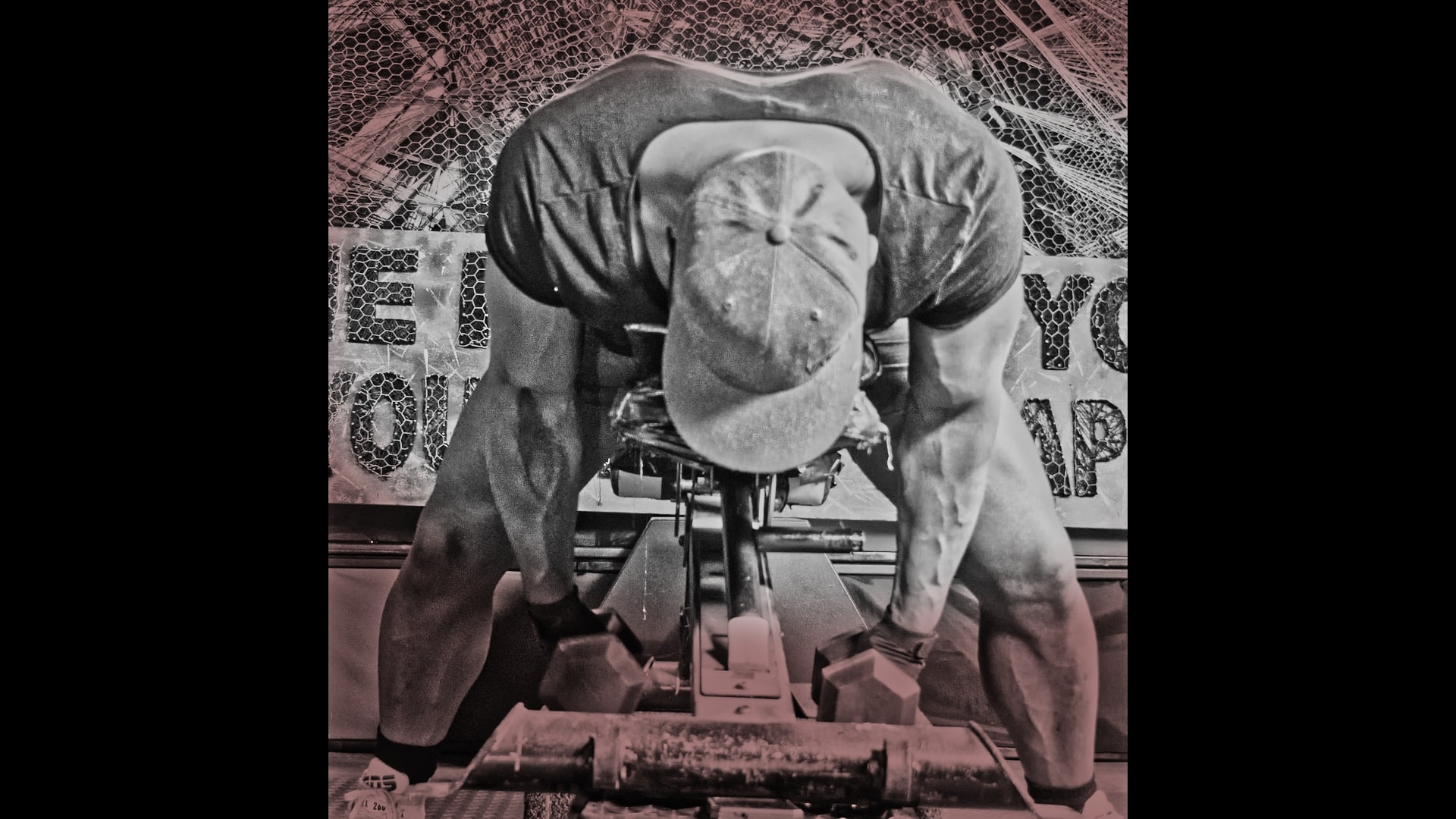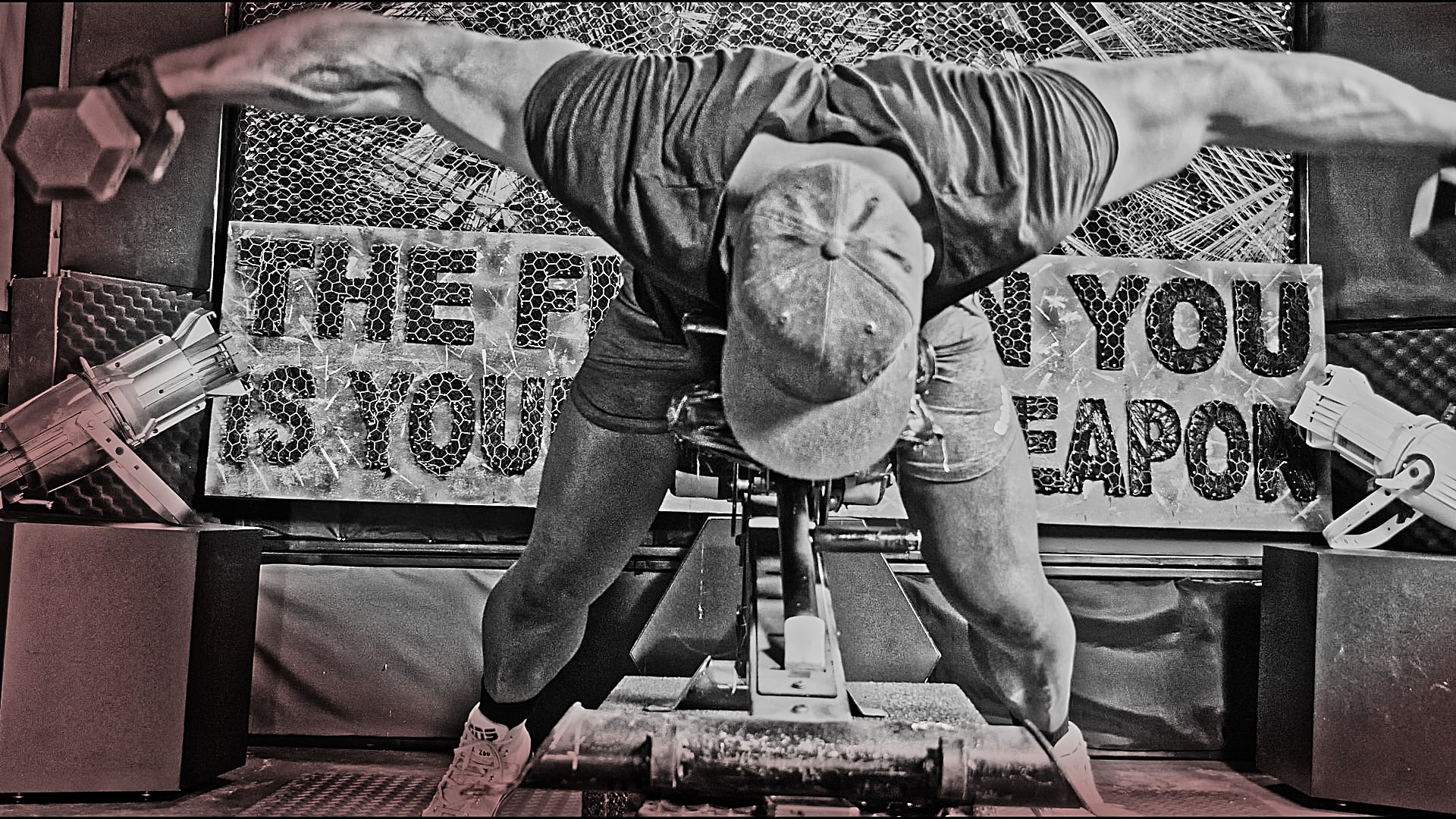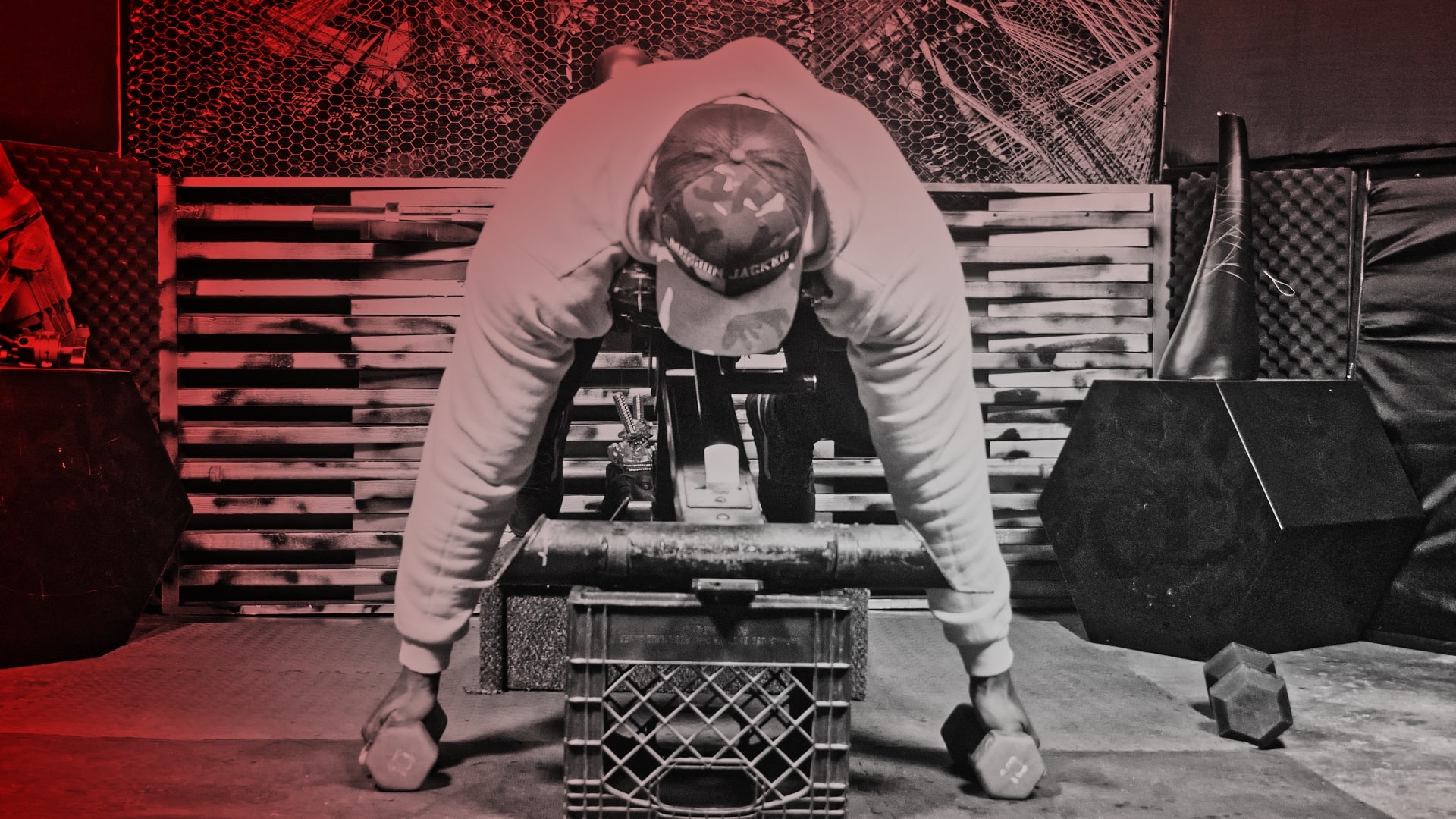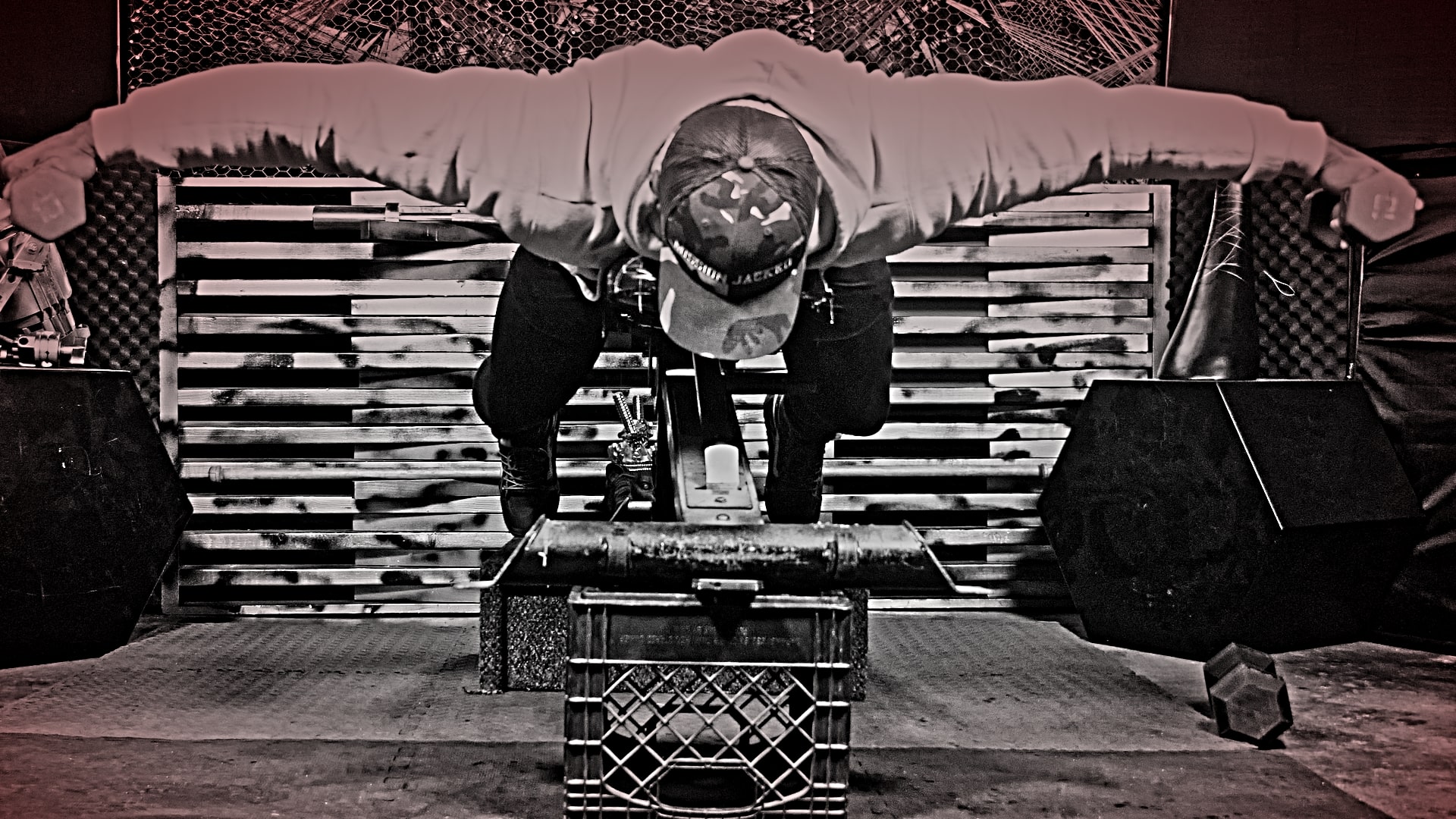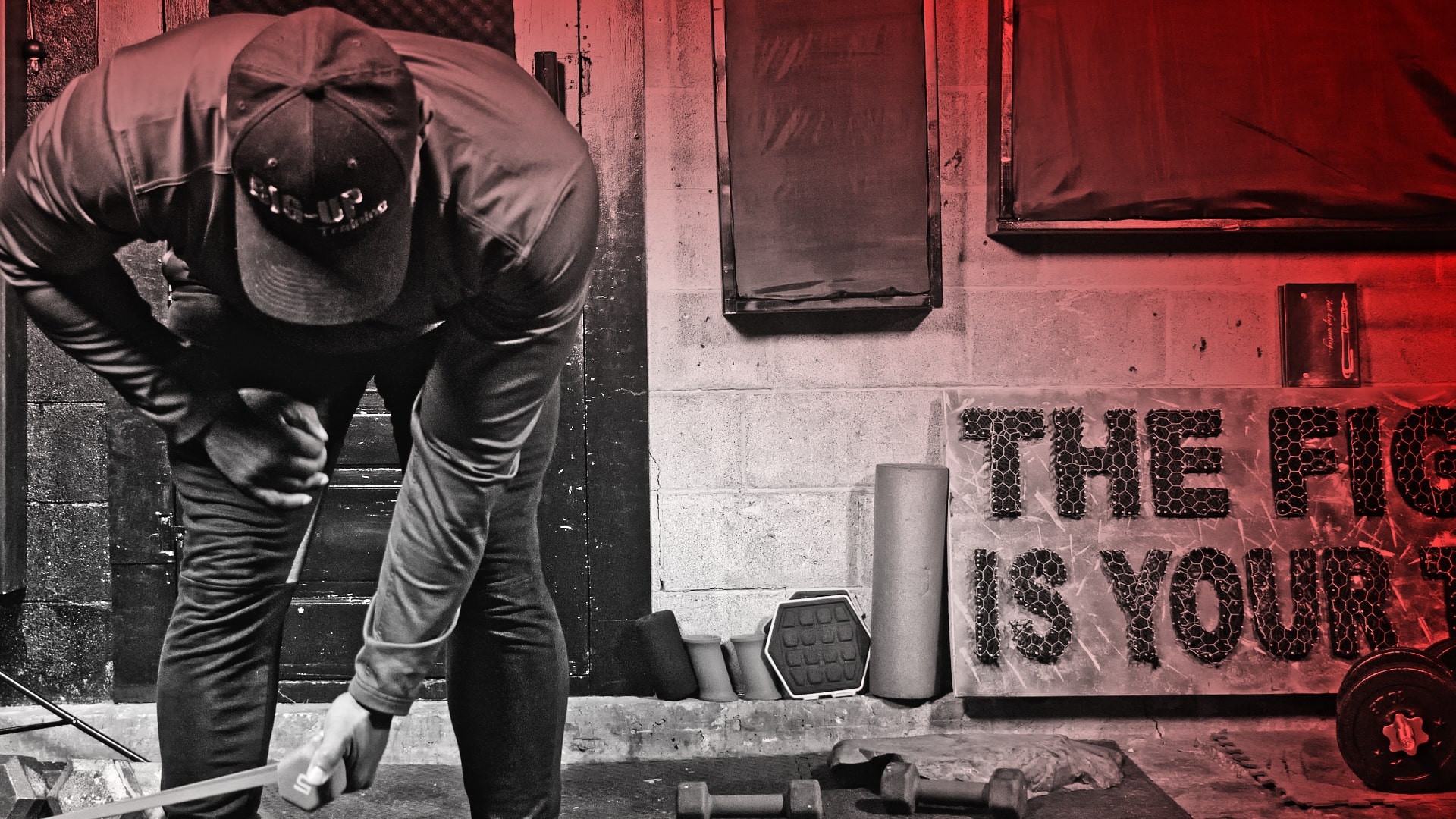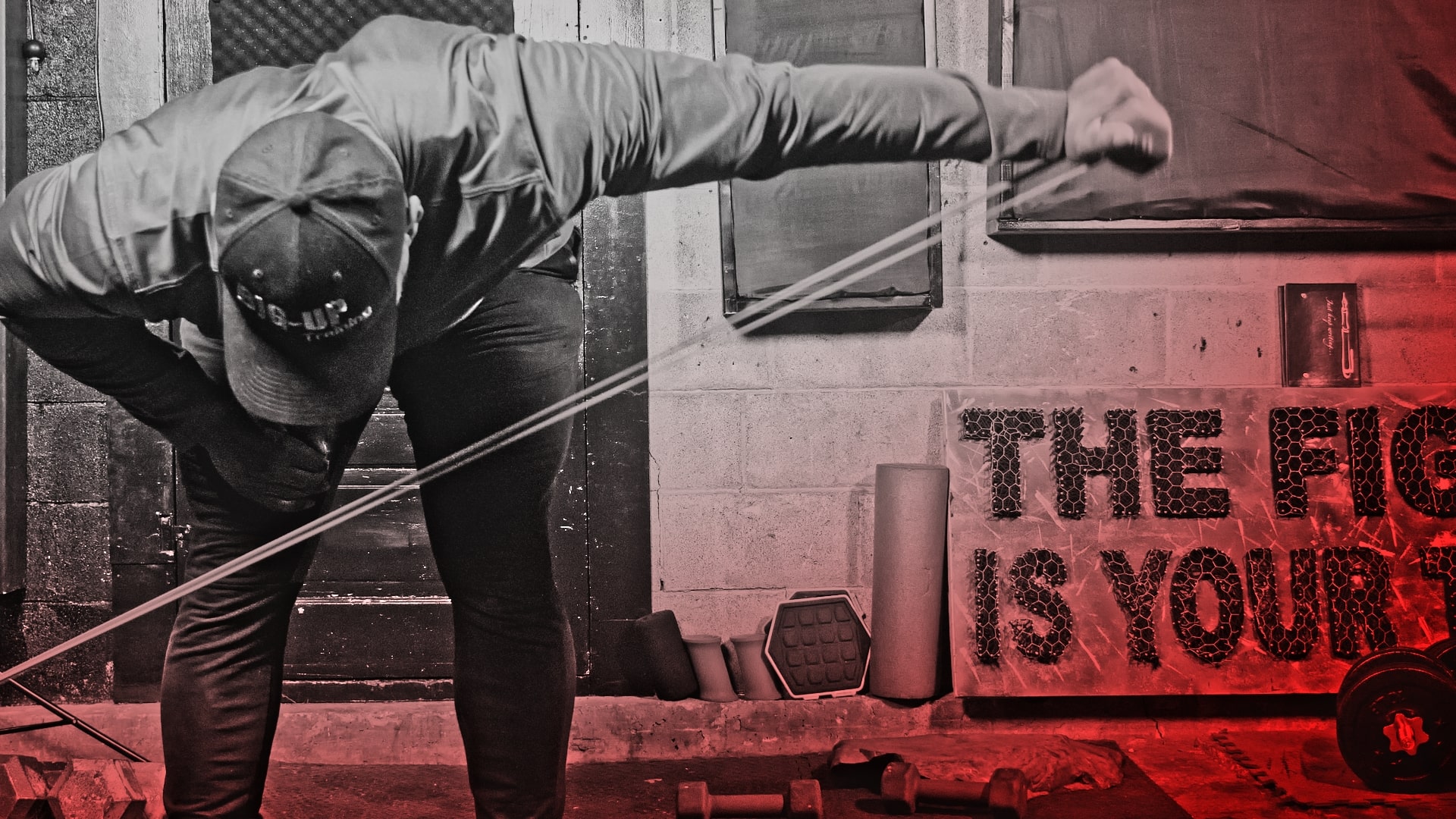Mission Jacked.com
Rear Delt Fly Content For Rear Delt Muscles.
Get A Better Rear View.
Table of Contents
What does the rear deltoid fly work?
How do you know if your rear deltoids are underdeveloped?
The Rear Delt Dumbbell Fly Form Guide
Variation 3: Flat Bench Rear Delt Flies
Variation 4: The Dead-Stop Rear Delt Dumbbell Fly
Variation 5: Single Arm Band Bell Rear Flys
Deltoids Under The Spotlight:
This is where you get the best rear deltoid dumbbell exercises in town!
Complete your Deltoid rebuild with the best Dumbbell shoulder workout for mass!
Want Wide Shoulders? Learn how to do True Dumbbell Delt Flys
Master 5 Versions of The Rear Delt Cable Fly For Stunning 3D Delts
Have You Tried This Muscle Building Rear Delts Workout?
Get More Results Using The Bent Over Rear Delt Fly - Gain More Muscle With These 5 Variations
Try This Rear Deltoid Dumbbell Workout For A Huge Size Advantage
Shoulder Flys – Are Your Delts Getting The Most From This Exercise?
The 5 Best Rear Delt Exercises That You're Not Doing!
Use the Seated Face Pull for Stability, Growth and Bigger Lifts
Chest Supported Rear Delt Row
The Leaning Lateral Raise - A Great Way To Cap off The Deltoids
Rear Delt Raise Workout Not To Be Missed!
Other Exercises Under The Spotlight!!
Rear Delt Fly Muscles Worked
If the shoulder press is the king of the Deltoids, the rear deltoid fly is the Duke of the posterior region. Also known as the bent-over dumbbell reverse fly, the rear delt raise, or the rear delt dumbbell fly; this exercise targets the muscles at the rear-delt area otherwise named the posterior deltoids or rear delts (Wikipedia Link). It also works the upper back muscles.
The Rear Delt Dumbbell Fly packs a punch well above its weight and commands respect in any shoulder workout session.
How Do You Know if Your Rear Delt Is Underdeveloped?
If your rear shoulder muscles seem to disappear and look flat the moment you turn to the side and the rear, chances are your rear deltoids are severely underdeveloped.
If you’ve been training for a while and seen little to no results, you might be asking are rear delts hard to grow? It can be difficult when you use poor form or too much weight to the point you have to rely on momentum. The problem with this muscle group is that it is much smaller and weaker than the surrounding upper back muscles; they can often get robbed of much of the work during an exercise.
In this article, I'll show you exactly how to perform the Rear Deltoid Fly so you can start growing a 3D rearview. For this, we won't be using a rear delt machine but mainly dumbbells. After you get a firm understanding of rear delt flies, we'll arm you with some variations and more information to add to your exercise arsenal.
My name is Psymon H., architect of the Mission Jacked movement, and the man making his name from improving physiques and growing natural muscle with minimal equipment.
In my nearly 40 years of natural bodybuilding, I've seen many physiques come and go. You can always tell the person that pays close attention to the minor details; their shoulders thicken out and look meaty from all angles, with a nice balance between the arms and the shoulders. On the flip side, I've seen many more physiques that suddenly disappear the moment they turn to the side or rear. In many instances, the Triceps overshow the shoulders making the person look somewhat deformed.
Don’t let that be you!
Before we break down the rear delt dumbbell fly content, I want to quickly explain the job of the rear-delt muscles because after all, knowledge is power, and power builds muscle and improves performance.
The Rear Deltoid Has Three Roles…
1: As they originate from the back-side of the body, the rear shoulder muscles extend the shoulder backward and hyperextend the shoulder, pulling it behind the line of your back.
2: When the arms are in an abducted position, it's called called transverse abduction.
3: Since the rear deltoids insert on the lateral aspect and wrap around the arm when they pull, they externally rotate the shoulder.
You have to get your elbows up and behind the line of your back to fully contract the rear deltoids. Now we know the job of the rear delts and how to get a good contraction in the muscle, let’s go ahead and fly some dumbbells.
The Rear Delt Dumbbell Fly Is A Great Place To Start
Learn How To Do The Rear Shoulder Raise Here!
We've Added A Rear Shoulder Fly Tutorial Below
Like with every exercise, using good form on this rear shoulder raise should come before weight. If you get the form right, the weight will soon follow.
Items Needed: Incline bench & a pair of dumbbells.
This exercise can be done by hinging over at the hips and performing the bent over rear delt fly version. While there is nothing wrong with this variation, we’re going to use the bench as support to minimize unwanted movement.
How To Do The Rear Delt Dumbbell Fly
Cue 1: Lean over an incline bench set at between a 45 and 75-degree angle. You can straddle over the bench so you're leaning against the back pad, or you can flip the bench around and place a pad on the top. Personally, I like the second option, but do what works best for you and makes the exercise more comfortable.Walk your feet up until they are under your shoulders. When you do this, it adds stability to the exercise. This creates maximum mechanical tension in the rear deltoids.
Cue 2: With arms straight and directly underneath you, turn your palms towards each other. Without rocking or lifting your torso off the bench, raise the weights out to the side in a sweep motion, until your elbows are slightly higher than the line of your Shoulders.
Cue 3: Hold for a brief second before lowering the dumbbells to the start position, trying to maintain as full a motion as possible.
If you have trouble raising your elbows high enough to the side, chances are the dumbbells may be too heavy. Start light and work your way up in weight once you've mastered the movement.
To improve the health of your delts, always warm-up, warm-down and include regular delt mobility work.
Unleash Your Best Physique With My Free Coaching Program
Rear Delt Row
rear delt dumbbell exercises
Here Are Some Delt fly Variations For Your Rear Deltoids
Variation 2:
Rear Delt Flyes Version 2
If you're looking for an engaging variant that taps deep into the muscle fibers of the rear deltoids, try these Rear Delt Flies out.
At first glance, version 2 looks no different from the original exercise. The setup is the same; you lean over an incline bench set between a 45 and 75-degree angle. You also walk your feet in so they're almost directly under your shoulders. Your dumbbells, arms, and palms will start in the same position. The only difference is where you fly the dumbbells.
Instead of flying the dumbbells directly out to the side, for this rear deltoid fly you fly them up at a 45-degree angle in front of you, aiming to bring your elbows as high as you can.
You may find this style more challenging than the original simply because it’s much harder to fly at a 45-degree angle while executing pristine form and keeping your torso from lifting off the bench. For this reason, you will need to use slightly dumbbells.
From my personal experience of using this version, I have found that if you use the best form possible, you use fewer upper back muscles and engage more rear deltoids.
We've Added A Rear Shoulder Fly Tutorial Below
rear delt exercises with dumbbells
Variation 3:
Flat Rear Shoulder Fly
The fact that you’re lying face-down on a flat bench for this rear deltoid fly makes this a much stricter exercise and a perfect alternative to the original Rear Deltoid Fly. If you feel yourself using too much momentum and you struggle with keeping your torso glued to the bench, opt for this Deltoid Fly version instead.
Items Needed: If you have a height-adjustable bench, great. If you don't, place two crates underneath a flat bench to lift it off the floor to give your arms room to move without hitting the floor.
Cue 1: Lay face down on your flat bench station, making sure to bring your chin over the edge of the bench. Pull your thigh back so that they don’t influence the exercise.
Cue 2: Start with straight arms directly under the station with palms facing in.
Cue 3: Concentrate on keeping your torso as still as possible as you sweep the dumbbells straight out to the side. Aim to bring your elbows up and past the line of your back on every repetition.
Cue 4: Briefly hold the top position before returning the dumbbells to the start position.
To improve the health of your delts, always warm-up, warm-down and include regular delt mobility work.
delt row variations
dumbbell rear delt row
Leaning Dumbbell Lateral Raise - A Great Way To Cap off The Deltoids
Variation
4:
The Dead-Stop Rear Delt Raise
If you want to make things extremely hard for yourself by evicting all momentum from your Rear Delt db Fly, this is the version for you. By starting every repetition from a dead-stop position and committing yourself to nothing more than the rear-deltoids doing all of the work, it becomes a real test of deltoid strength. If you haven't tried this rear delt dumbbell fly variation, add it to your next shoulder workout.
Items Needed: Flat bench and a pair of dumbbells. If you have long arms, you may need to place a couple of bumper plates under each end of your flat bench.
Cue 1: Your start position is different from the original rear db delt fly and almost starts a quarter of the way up. Make sure to start with the dumbbells on the floor and in line with your shoulders.
Cue 2: Keep your torso as still as possible and lift the dumbbells out to the side until your elbows finish as high as possible.
Cue 3: Pause briefly at the top before returning the dumbbells to the dead-stop position on the ground.
rear deltoid exercises
Variation
5:
Single Arm Dumbbell Rear Fly With Band
This single arm dumbbell rear raise with band is a great way to maintain tension on the rear deltoid while making it progressively harder the higher you raise your arms. This doesn’t take much weight to pressurize the muscles in question. Your rear delt flies will never be the same once you add this variation.
Items Needed: One dumbbell, one light resistance band, and an upright anchor.
Setup: Loop your band at the bottom of an upright anchor ensuring that the band and the anchor are secure under tension.
Cue 1: Lay the band out on the floor looped around the dumbbell. Stand side-on and just behind the end of the band. Pick up the band/bell combo with the hand furthest away from the anchor and hinge over at the hips.
Cue 2: Take a side step away from the anchor to allow for a little tension to mount in the band. At this point, your head should be directly in line with the band/bell combo. Place your other hand on your thigh to help you maintain a square position.
Cue 3: While keeping yourself square on, raise the band/bell out in a fly motion until your elbows are level with the line of your back.
Version 6: This same rear delt reverse fly variation can be performed with a cable machine. I like to do this movement without a handle which restricts the amount of weight you can use but helps you focus on committing to good form.
To improve the health of your delts, always warm-up, warm-down and include regular delt mobility work.
best rear delt dumbbell exercises
Check Out This Rear Shoulder Raise Video Tutorial Below
list of rear delt exercises
Rear Delt Fly FAQs
Q: Why are rear delt flys so hard?
A: The rear delt fly can seem a really hard exercise to perform if you are not used to training your rear Deltoids. This muscle is notoriously weak in comparison to the surrounding muscles in the upper back area.
Another reason why the rear delt db fly can be hard is if you use the Incline Bench rear delt dumbbell fly version where you have little room to sway the body and influence the exercise.
If you are new, start light and concentrate on form before increasing the weight. This will give your rear deltoids time to get used to being worked and more time to get stronger.
Q: Are rear delt dumbbell fly push or pull?
A: The Dumbbell rear delt dumbbell fly is classed as a pulling exercise because all you are doing is modifying the classic row motion by extending your arms out. If you have broken down your workouts into a push/pull split, it’s recommended you do rear deltoids, and all of your rear delt flys on your pulling day along with your Back/Lat workout.
Q: What can I do instead of rear delt dumbbell fly, is there a rear delt fly alternative?
A: You can perform standing or seated Face Pulls Into Press. You could also do an Incline Flared High Row that stimulates the same muscles as Rear Deltoid Flys.
Q: Do rear delt dumbbell fly work Traps?
A: Yes, when you perform a rear delt db fly you involve some mid and lower traps. This is especially true if you do a reverse fly variation such as the Incline Bench rear delt dumbbell fly because your upper body is supported. You can influence the Traps more by retracting your shoulder blades by pulling them back before each repetition.
Q: Can you do a rear delt dumbbell fly into row?
A: Yes, what is being described is what we call an In-Set Superset, where you alternate between two different exercises within the same set. The best way to perform this high-intensity strategy is to pair the Bench rear delt dumbbell fly with Incline Flared Dumbbell Row to blast the rear deltoids.
Pay special attention to your row and shoulder fly form so that most of the stress remains on the rear deltoids instead of the upper back. I would even play with both my row and rear delt hand position to get the best out of both exercises.
With the row, start with a wide pronated grip, and make sure to row in line with the shoulders. For the next set, I would change the hand position so that my palms are facing in, making sure to lift the elbows as high as I can at the top of the movement.
With the delt fly, I would start with palms facing each other and leading with my knuckles. On set two I would turn my grip to a pronated position and do my delt flys by leading with my little finger.
For this Rear Deltoid Fly/ Row In-Set Superset, start with 2 sets of 16 repetitions, meaning that you would alternate between the two different movements until you’ve performed 8 repetitions of each exercise. Aim for leaving 1-2 repetitions in reserve on each working set.
Q: Where can I find more rear delt fly variations to add to my rear deltoid workout?
A: We have an article all about Bent Over Rear Dumbbell Flyes and their various different variations. There are some great exercises you can swap in and out of your training block.
Deltoid Extra:
This is where you get the best rear delt dumbbell exercises in town!
Complete your Deltoid rebuild with the best shoulder dumbbell workout for mass!
Want Wide Shoulders? Learn how to do True Dumbbell Lateral Raises!
Everything You Need To Know About Getting Results With The Bent Over Rear Delt Fly
Master 5 Versions of The Rear Delt Cable Fly For Stunning 3D Delts
The Shoulder Fly – Are Your Delts Getting The Most From This Exercise?
Use the Incline Rear Delt Raise To Build Incredible 3D Delts
 Click On The Image To Start Your Free Coaching Today!!
Click On The Image To Start Your Free Coaching Today!!Rear Delt Fly Also Known As
1: Incline Rear Delt Dumbbell Fly
6: Incline Rear Deltoid Dumbbell flys
14: Incline Rear Delt Dumbbell Fly
16: Incline Rear Deltoid Flies
18: Incline Delt Fly
19: Incline Bench Rear Delt Fly
20: Incline Dumbbell Rear Delt Fly
21: Incline Bench Rear Delt Fly
Start The Best 5 Day Dumbbell Workout Today & Get 5-Weeks Free Coaching!
rear delt exercises dumbbells
Not only can the rear delt dumbbell fly be done on an incline bench, but they can be done in the bent over position. This is call the bent over rear fly aka...
1: Bent Over Rear Delt Dumbbell Fly
4: Bent Over Rear Dumbbell Fly
6: Bent Over Rear Deltoid Dumbbell flys
7: Bent Over Rear Shoulder Fly
11: Bent Over dumbbell Rear Fly
12: Bent Over Reverse Delt Fly
14: Bent Over Rear Delt Dumbbell Fly
15: Bent Over Rear Deltoid Fly
16: Bent Over Rear Deltoid Flies
19: Bent Over Dumbbell Rear Delt Fly
Learn how to do all of the bent over rear delt fly variations here!
Have You Tried This Muscle Building Rear Delts Workout?
Start Your Free Five day dumbbell workout Program Today!!
delt exercises with dumbbells
With these six different rear delt fly variations, there’s no excuse for you not to be adding this to your workouts. I hope this has helped to improve your shoulder fly form.
Other Exercises Under The Spotlight!
Include the Chest Supported Row For A Bigger Back. I’ll share the form guide and 6 different variations
It’s time to Split Squat your way through these 6 variations For bigger and better legs.
Incline Curls, The Baddest Sit-Down Exercises In The Whole of The Bicep Kingdom.
Master The Dumbbell RDL in 5 Easy Steps – Try These 10 Variations
db Skull Crushers: Get Big Results With These 2 Variations!
Build The Rest Of
Your Physique!
Is This The Best Chest and Tricep Workout With Dumbbells? You Decide!
Build A Bigger Back and Biceps With This Dumbbell Head-Turning Workout
Top 10 Best Dumbbell Chest Exercises To Crack Open Your Treasure-Chest
We Leave You To Do The leg-Work With These Quad & Hamstring Exercises
Got Weak Calves? Check Out These 5 Calf Raise With Dumbbell Variations
Mission Jacked L.L.C
Address: 9407 NE Vancouver Mall Dr
STE 104 #1269
Vancouver, WA 98662 USA
Email: mission@missionjacked.com


